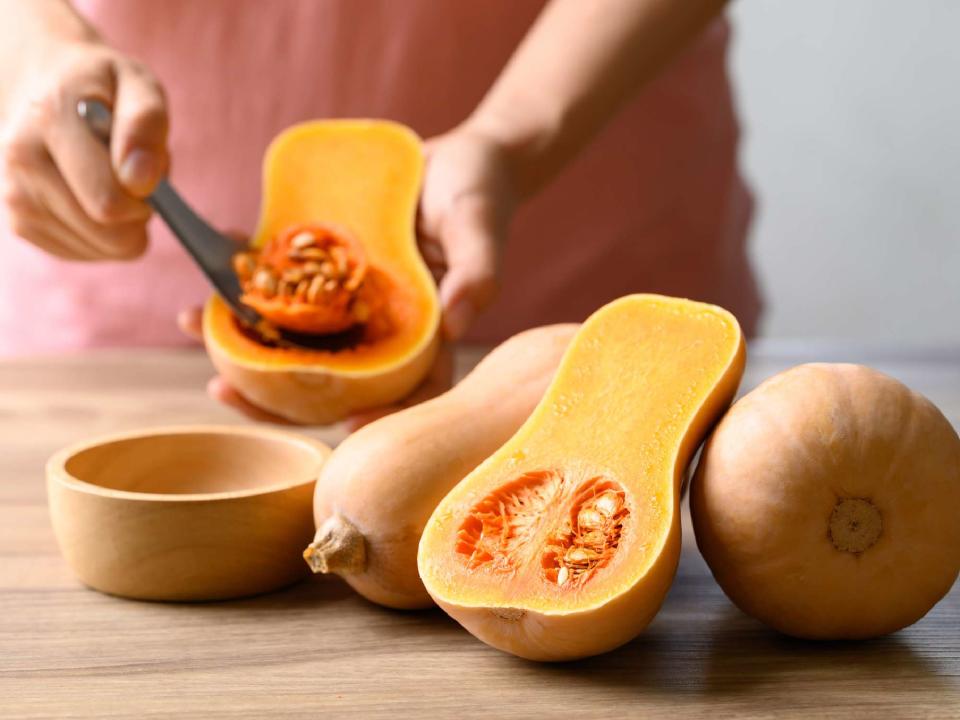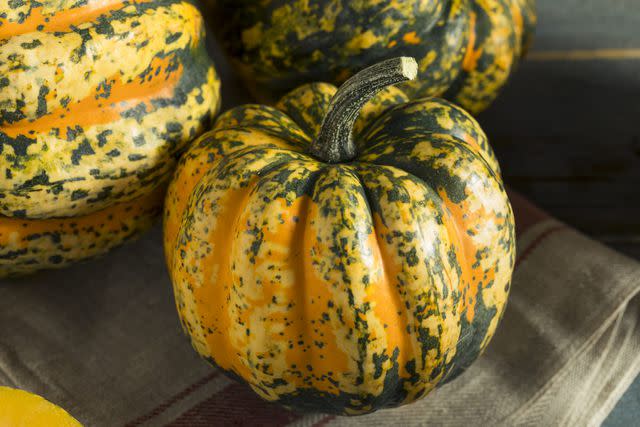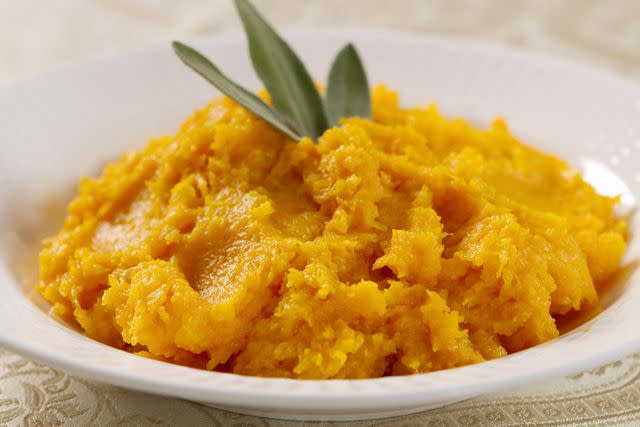How to Freeze Butternut (or Any) Squash and Preserve Perfect Fall Flavor All Year
Don't skip this quick, convenient method for freezing winter squash and creating instant coziness in dishes year-round.

What's not to love about winter squash? It's delicious, comforting, sweet and earthy, with a heavenly, creamy texture. It comes in all sorts of shapes, sizes, and colors, in varieties like butternut, kabocha, delicata, hubbard, buttercup, acorn, and carnival. Winter squash is even more special thanks to its wide range of uses, from the savory to the sweet, everything from risotto to bread, soup to pie.
With its sheer versatility, it's hard to get enough winter squash. But if you reach your limit, overbought, or just simply want some when it's out of season, freeze it for a no-fuss extension not the season.
Related: 16 Types of Squash — And the Best Ways to Use Them
How to Freeze Raw Squash
Freezing raw squash is not only simple, it's preferred. You may decide to blanch the squash before you freeze it if you're worried about the taste, texture, color, and nutrients staying intact, but it is truly unnecessary, and the vegetable will last just as long whether you complete this extra tedious step or not.

No matter what you decide, do yourself one favor – peel and slice the squash before freezing it if it's one of the types that requires it for cooking.
Peel the squash and remove the seeds with a spoon. (Toss these innards or reserve the seeds for roasting later.)
Slice the squash into manageable chunks, like 1-inch cubes or slices.
Spread the cubes or slices on a parchment-lined baking sheet in a single layer. Freeze at least one hour, or until fully frozen.
Transfer the frozen squash to a zip-top bag, remove as much air as possible, and store in the freezer for up to a year. Make sure to label and date the bag(s).
Related: How to Peel Butternut Squash
When you're ready to use the raw squash, transfer what you need to a new bag, and toss it in the fridge to thaw overnight. Or, if pressed for time, drizzle the frozen squash with olive oil and roast it right from frozen. You can also toss it directly into a soup, stew, chili, risotto, etc.

Get the recipe: Scalloped Sweet Potatoes and Butternut Squash
How to Freeze Cooked Squash
Cooked squash fares best by pureeing it first and freezing it in that form. This helps preserve the squash but keeps the flavor and especially the texture intact when it's defrosted, saving you from a mushy, gloopy mess. There's a reason the popular thanksgiving side dish is often served in this manner, transformed from a brick-shaped package purchased in the store freezer section to a piping hot bowl of comfort on the table.

Boblin / Getty Images
Roast the squash. Cut it in half, scoop out the seeds, and place the halves cut-side down in a baking dish. Pour in ? inch of water. Bake at 400 degrees F for about 40 to 60 minutes, or until it's completely cooked. Flip the squash over and let cool for 10 minutes before scooping the flesh out into a blender or bowl to mash.
Puree or mash the squash well. Be careful not to add any liquid to this step, even if you're tempted to. Let cool completely.
Pour or pipe the cooled squash puree into ice cube trays or muffin tins and freeze at least one hour, or until fully frozen.
Transfer the frozen puree to a zip-top bag and store in the freezer for up to 3 months, making sure to label and date the bag.
How to Use Frozen Squash
To use your frozen puree, heat it directly from frozen in a saucepan on stove. It will defrost in only a few minutes. The heated puree is wonderful for lasagna, sauce, dip, muffins (an excellent alternative to pumpkin puree), or soup.
Related:
Read the original article on All Recipes.